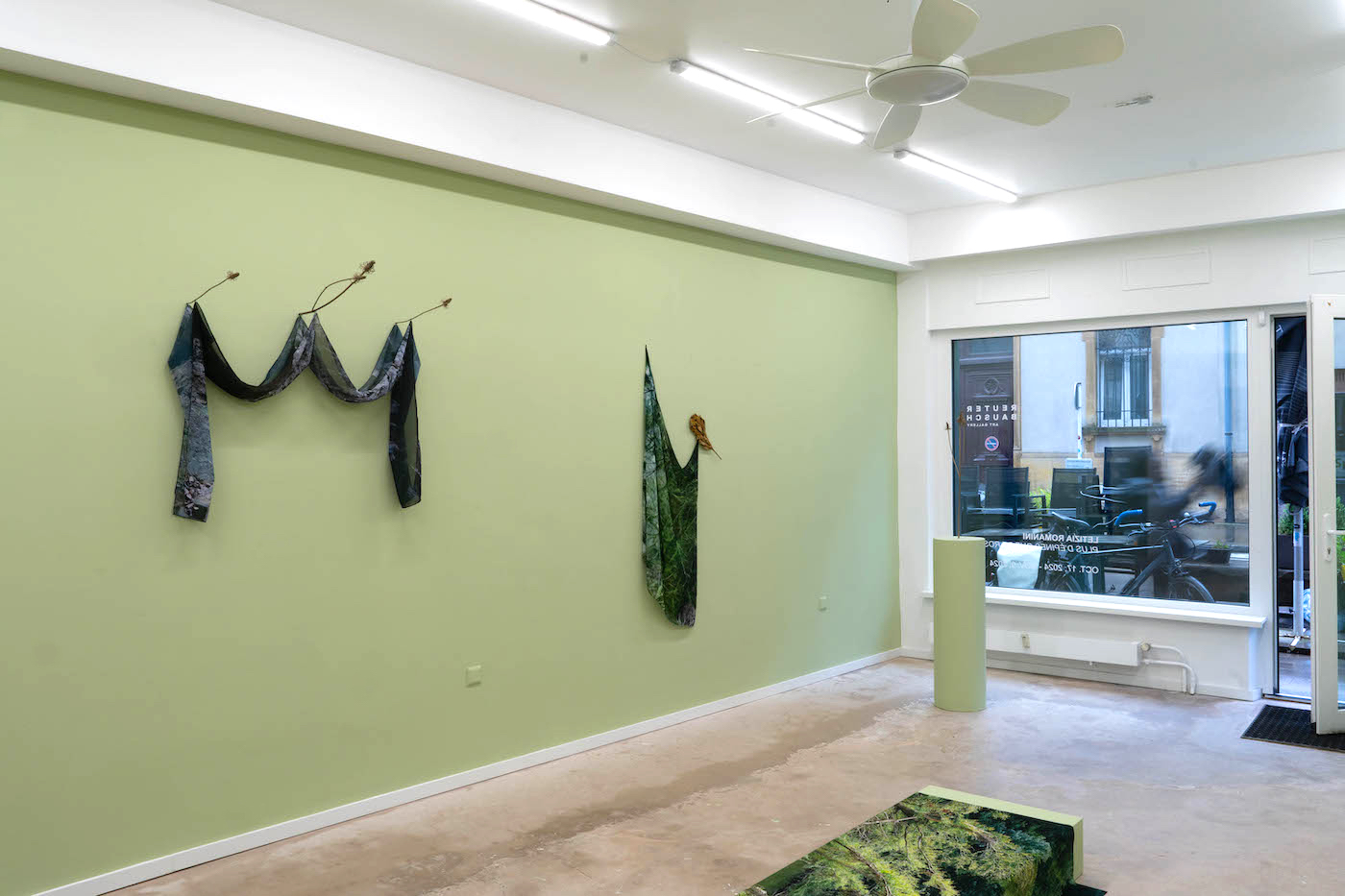- Letizia Romanini
- Oct. 18 - Nov. 09, 2024
- plus d'épines que de roses
plus d'épines que de roses
Letizia Romanini walked around a country, not to achieve a sporting feat or an artistic performance, but out of a desire to inscribe landscapes into her body, to see them with her eyes but especially to feel them through the strength of her legs. Walking around a country means experiencing the border, inhabiting it, and traversing a third peripheral space that is neither home nor the other— a nameless space infiltrated by unruly vegetation. It's a way to rediscover a form of lost nomadism, replaced by the 10,000 steps recommended each day in our ultra-sedentary society. To walk around a country is above all to experience slowness, to find beauty in detours, to feel distances, and to submit to the rhythms of nature.
In 2021, Letizia Romanini undertook a 24-day walk, covering the 356 kilometers of Luxembourg's borders. During this journey, she captured hundreds of images, but she also gathered plants, stones, and small “left-behind” things, as she puts it. Since this walk, Letizia Romanini has become interested in buffer zones—those marginal spaces she crosses on her daily commutes to her studio and during other travels. In these daily movements, she continues to pick, bend down, gather, and collect what pricks, intertwines, and entangles. Thistles and acacia branches, for instance, plants that, with their thorns, act like barbed wire, are isolated from their environment to better highlight their sculptural quality. The gathered plants have inspired her brooches and jewelry, while the collected images have left the screen, shedding their two-dimensionality to exist in space, printed on fabrics. The compositional lines of her photographs have also informed the design of her straw marquetry.
Bronze casting, textile or aluminum printing, and the artisanal practice of straw marquetry allow the artist to transfigure what she has gleaned in a perpetual process of shifting scales and focal points. This diversity of techniques reflects Letizia Romanini's varied practice: installation, sculpture, and drawing are all means for the artist to reveal what existed there—on the ground or before our eyes—but which sometimes escapes our notice.
Texte: Juliette Hage (translated from french)











